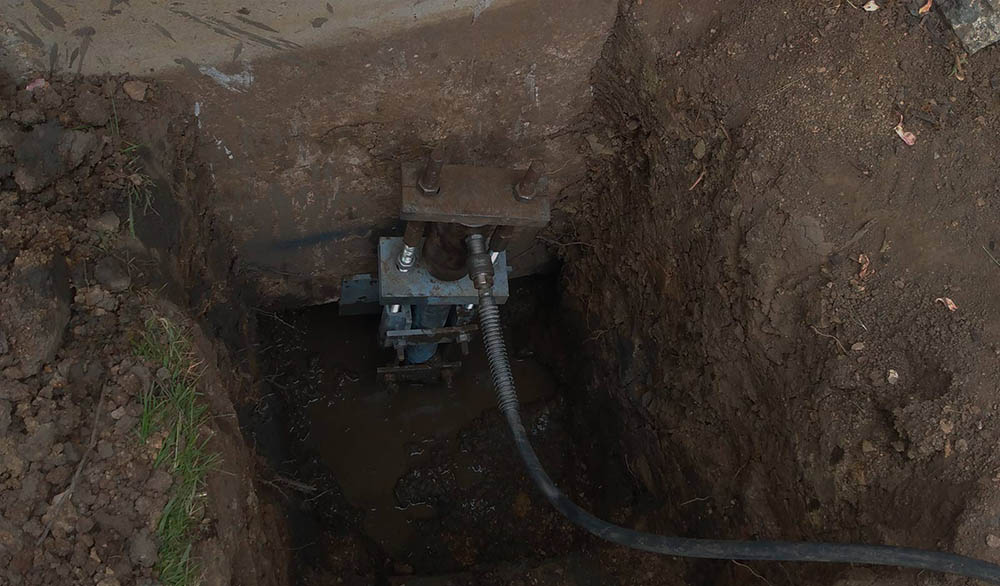Kansas City foundation piering is best described as driving steel pipe pilings as a way of fixing a failing foundation. This method also helps correct foundation settlement.
There are two types of piering used for correcting foundations: push piers and helical piers. Although both types serve the same purpose, they feature different construction and installation techniques. Read on to learn more about foundation piering and what it does for your foundation.
Kansas City Foundation Piering Explained: The Types of Piering
Push piers use epoxy-coated or galvanized steel pipe sections that a professional drives into the ground with a hydraulic ram. Helical piers, on the other hand, consist of screw piles that have steel shafts.
Installation for helical piers uses a lead section with one or two helixes for the bearing capacity required. A hydraulic torque motor is used to drive these piers into the ground, rather than a ram.
One thing that is the same for both kinds of piers is that one or two piers are driven into a soil or rock layer first. A metalhead assembly helps attach the piers to the foundation. The piles receive tests to make sure they are able to bear the appropriate weight.
A hydraulic jack raises the foundation back to its original height. After the foundation is restored to the proper height, the piers are bolted or welded to the wall.
The Advantages That Foundation Piering Offers
Kansas City foundation piering highlights several important advantages. These advantages include:
- No heavy equipment is required
- Your yard is left intact throughout the process
- This solution addresses the cause of foundation settlement and the consequences
- The equipment offers the advantages of being portable and able to use in tight spaces
- You can still live in your home with minimal disruption while this process is going on
- This solution is affordable, costing less than ten percent of the cost of replacing your foundation
Kansas City Foundation Piering Explained: How the Installation Process Works
The process for installing foundation piering follows a simple process. A foundation professional makes a 3’ x 4’ excavation adjacent to the foundation. This excavation will be about 10” below the grade beam.
Next, the soil is removed from the footing bottom. Chipping the foundation smooth comes next, to ensure a smooth surface for the support bracket’s fit. After the brackets and hydraulics have been installed, a guide sleeve goes through the support bracket.
After these steps, the starter and pier sections advance at 50,000 of driving force to refusal. The foundation professional cuts the last pier section about 5” over the support bracket. A final step to this part of the installation process is installing a fastening plate at the support column’s top.
The structure is raised sequentially using the hydraulics next. Fastening plates and support brackets are permanently attached after the foundation is back at the proper height. After these steps, the process is virtually complete.
Some final steps include replacing and compacting the soil in the excavated area, as well as replacing any concrete or shrubbery removed. A regularly yearly maintenance step involves recording depth, elevation, and pressure readings.
How Do Push and Helical Piers Vary? How Are They Similar?
The main difference between the two types of piers involves load testing. In the case of push piers, each receives individual load testing. Load capacity for helical piers is established from the torque measurements involved in the installation.
One thing that both types of piers have in common is working in all soil types, including questionable soil. Another common feature is that both systems can be installed in fairly tight spaces.
Does Your Foundation Require Piering?
If your home has foundation issues, piering might be what you need to get everything stabilized. Contacting us about Kansas City foundation piering will help you decide which steps to take to fix your foundation issues.

